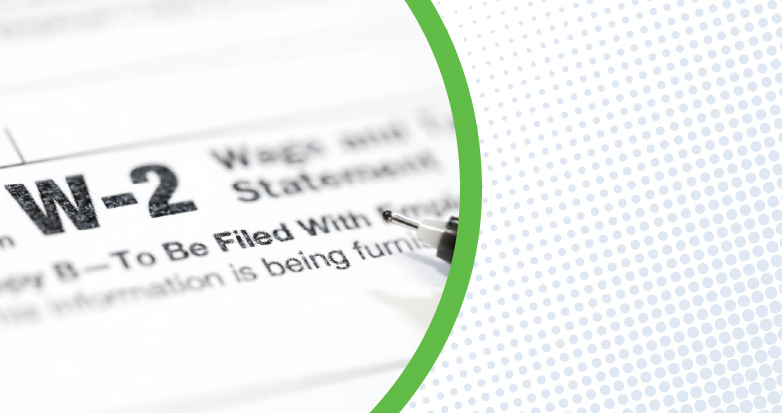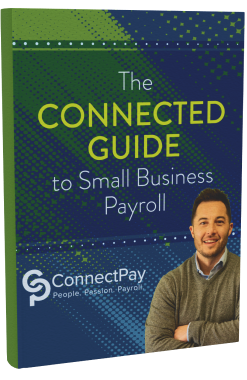Get Ready for W-2s, 1099s & Deadlines: A CPA Firm’s January Playbook

For CPA firms, January isn’t only about meeting deadlines. It’s also about setting the pace for everything that follows. How your team manages these early weeks can influence the workflow and confidence of the entire tax season. Here’s a playbook to help your firm approach January with purpose and clarity.
Playbook Chapter 1: Core deadlines every CPA must track
This first chapter may seem like common sense, but it’s good to have January’s deadlines right in front of you where they can’t be forgotten.
January 31, 2026
- W-2 Distribution and Filing
- 1099-NEC Filing and Distribution
- Distribution of Certain 1099-MISC Forms
- Filing of 2025 4th Quarter Form 941
- Filing of 2025 Employer Federal Unemployment (FUTA) Tax
Other January Deadlines
- State filing deadlines. Many states mirror federal due dates for W-2 and 1099 filings, but some vary. Double-check state portals early to avoid last-minute surprises.
- Information return corrections. Build in buffer days in late January to handle data corrections, rejected e-filings, or last-minute client updates.
Playbook Chapter 2: Organizing your workflow
Here are some ideas to keep your firm organized and moving efficiently as the chaos increases.
- Prioritize by client type. Sort clients based on complexity, entity type, and filing volume. Handle large payroll clients and those with multiple 1099s first to avoid late scrambles.
- Set internal deadlines ahead of IRS cutoffs. Build a cushion of a few days to allow for review, corrections, and e-filing confirmation. Internal milestones keep the team on pace without panic.
- Use a centralized task tracker. Adopt a project management tool or shared spreadsheet that lists every client, their filing type, and current status. Visibility keeps accountability effortless.
- Batch similar tasks. Group work by form type, client size, or reviewer. Handling similar tasks together reduces context-switching and increases accuracy.
- Standardize document requests. Send uniform templates for W-9s, payroll reports, and address confirmations. Consistent language means fewer errors and faster responses from clients.
- Schedule team check-ins. Short daily huddles or twice-weekly syncs keep progress visible and blockers addressed early. A few minutes of communication saves hours of confusion.
- Create a review loop. Assign reviewers to specific clients or categories, ensuring every form receives a second set of eyes before submission. Quality control becomes part of the process, not an afterthought.
Playbook Chapter 3: Technology and automation to the rescue
The right technology can remove bottlenecks, cut down on manual entry, and keep both your staff and clients in sync. Here are some suggestions.
- E-file everything. Electronic filing not only speeds up processing but also reduces the risk of lost or rejected forms. Not to mention that e-filing is now mandated for most businesses.
- Use secure client portals. Centralized portals let clients upload W-9s, payroll data, and supporting documents without relying on email. Encryption and access controls keep sensitive information safe.
- Automate reminders. Schedule recurring email or text prompts for missing information and upcoming deadlines. Automation keeps follow-up consistent even when staff bandwidth is stretched thin.
- Adopt bulk form software. Systems that generate W-2s and 1099s in batches save enormous amounts of time. Many integrate directly with accounting software to minimize rekeying errors.
- Leverage workflow dashboards. Real-time dashboards show where each client stands in the filing pipeline. Quick visual insights help managers spot bottlenecks and redistribute workload.
- Integrate digital signatures. E-signature tools allow clients to approve forms instantly, reducing turnaround time and eliminating the paper shuffle.
- Back up and sync automatically. Cloud-based systems with version control ensure that every change, correction, and update is safely stored.
Playbook Chapter 4: Communication – Keeping clients in sync
When January hits full stride, client communication can make or break your workflow. Clear, consistent outreach keeps information flowing and prevents bottlenecks.
- Start early. Reach out before the new year ends to remind clients about collecting W-9s, verifying addresses, and submitting updated payroll details. A short preseason checklist helps everyone hit the ground running.
- Use simple, repeatable templates. Create standardized email messages for document requests, status updates, and form delivery confirmations. Consistent language prevents confusion and speeds up replies.
- Set communication expectations. Let clients know when they can expect updates and how quickly they should respond to requests. This clarity builds trust and reduces the dreaded last-minute scramble.
- Centralize all correspondence. Use a client portal or CRM to store messages, uploaded forms, and status notes in one place. When every team member can see the same data, follow-up becomes seamless.
- Educate while you remind. Include brief explanations about why each form or deadline matters. Clients are more responsive when they understand the stakes and see your firm as a guide, not just a messenger.
Playbook Chapter 5: Quality control under pressure
Accuracy is the quiet hero of January, as quality control keeps errors from turning into costly rework or IRS notices down the line. A few deliberate checkpoints can save hours of cleanup later.
- Create a layered review process. Every form should pass through at least one secondary review before submission. Even experienced preparers benefit from a fresh set of eyes catching typos, mismatched numbers, or incorrect EINs.
- Rely on checklists, not memory. Build and share standardized checklists for each filing type – W-2s, 1099s, payroll forms, and state submissions. A consistent review process eliminates guesswork and helps newer staff ramp up quickly.
- Validate data at the source. Compare imported figures to original payroll reports or bookkeeping records before filing. Verifying early prevents discrepancies from snowballing into rejected returns.
- Track rejections and corrections. Use a shared log to document e-file rejections, corrections sent, and client updates received. The record becomes an internal feedback loop for improving next year’s process.
- Respect the pause. Encourage team members to slow down for a brief review before hitting submit. A two-minute sanity check can prevent a two-hour problem.
- Balance speed with steadiness. Remind staff that accuracy builds trust. Clients remember when filings go smoothly far more than when they go fast.
Playbook Chapter 6: Looking beyond January
When the last W-2 is completed, the real opportunity begins. The lessons learned in January can shape a more strategic year ahead, but only if your firm takes the time to pause and reflect.
- Hold a debrief while the details are fresh. Schedule a quick team meeting in early February to discuss what worked, what didn’t, and which bottlenecks appeared most often. Honest reflection now prevents repeat headaches next season.
- Refine templates and systems. Update document request lists, communication templates, and workflow trackers based on this year’s experience. Small tweaks compound into major time savings over the next cycle.
- Document best practices. Capture successful processes, from internal review steps to client outreach timing, in a shared playbook. Next year’s staff, especially new hires, will thank you.
- Evaluate your tech stack. Assess whether your current software met expectations or created friction. The quieter months are ideal for testing new integrations or automation upgrades.
- Nurture client relationships. Send thank-you notes or quick check-ins to key clients, reinforcing the partnership beyond tax deadlines. Thoughtful follow-up turns transactional work into long-term trust.
- Build a proactive calendar. Plot out major milestones for the rest of the year, including quarterly reviews, estimated tax reminders, and training sessions. Proactive planning turns busy season insights into year-round stability.
January will always bring its share of deadlines and late nights, but it doesn’t have to bring disorder. Use this playbook to turn one of the busiest months of the year into a demonstration of control and confidence for your firm, a chance to refine your systems and be fully prepared for the tax season ahead.






